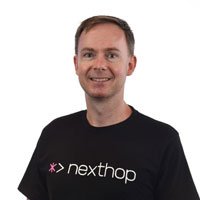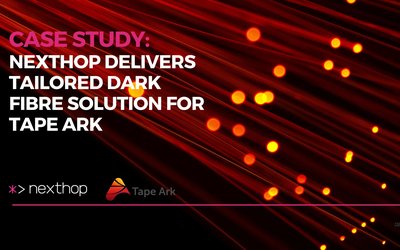The World of Dark Fibre
What is Dark Fibre?
Dark Fibre, on the other hand, is the antithesis of Wavelength services. It refers to optical fibres that are installed but remain unused by the network owner. Instead of leasing pre-established channels, organizations either lease or own these unused optical fibres for exclusive use.
How Dark Fibre Works
Dark Fibre provides complete control over the network infrastructure. When you opt for Dark Fibre, you gain exclusive access to the optical fibres, allowing you to configure and manage the network according to your specific needs. You can choose the equipment and technologies that suit your organization best.
Pros of Dark Fibre
- Total Control: Dark Fibre offers unparalleled control over your network. You can customize it to meet your exact requirements, making it suitable for organizations with unique networking needs.
- Cost Savings: In some cases, Dark Fibre can be a cost-effective choice, especially for organizations with long-term networking plans. By eliminating recurring service charges, you can potentially save on operational expenses.
Dark Fibre finds its place in various situations:
- Large Enterprises: Organizations with extensive networking needs and the resources to manage their infrastructure often opt for Dark Fibre to tailor their networks precisely.
- Research and Educational Institutions: These organizations often require high bandwidth and custom configurations for data-intensive projects, making Dark Fibre a preferred choice.
- Network Redundancy: Dark Fibre can be used to create redundant network connections, ensuring business continuity in case of failures on the primary network.
Dark fiber vs Wavelength
Cost Considerations
When it comes to cost, there's a distinct contrast between Wavelength and Dark Fibre. Wavelength services usually involve monthly service fees, while Dark Fibre requires a substantial upfront investment for leasing or owning the fibres. However, over the long term, Dark Fibre may prove cost-effective due to the absence of recurring fees.
Scalability
Scalability is another crucial factor to consider. Wavelength services offer straightforward scalability by adding more wavelengths as needed. Dark Fibre, on the other hand, requires upfront planning and investment. Expanding a Dark Fibre network may involve deploying additional fibres, which can be a time-consuming and costly process.
Latency and Performance
Latency, or the delay in data transmission, is a critical consideration for many applications. Wavelength services, being managed by network providers, often come with service-level agreements (SLAs) that guarantee low latency. Dark Fibre's performance depends on how well it's configured and managed by the organization, making it vital to maintain a high-performance network.
Security and Control
In terms of security and control, Dark Fibre reigns supreme. Organizations that require utmost control over their data and network infrastructure may prefer Dark Fibre. With Wavelength services, you rely on the network provider for security measures and control to a certain extent.
Which One Is Right for You?
Assessing Your Needs
Before making a decision, it's essential to assess your organization's specific network requirements. Consider factors such as:
- Network Size: How extensive is your network, and how much data do you need to transmit?
- Budget: Can you afford the upfront costs associated with Dark Fibre, or is a monthly service fee more feasible?
- Control: Do you require complete control over your network, or are you comfortable relying on a service provider?
- Scalability: Are you anticipating rapid growth in your network demands?
- Choosing Based on Requirements
Opt for Wavelength If:
- You have a relatively small network with manageable data traffic.
- Scalability and ease of deployment are critical for your organization.
- Monthly service fees align with your budget.
- You prefer to rely on the expertise of a network provider.
Consider Dark Fibre If:
- You have a large network with extensive data transmission needs.
- You require complete control over your network infrastructure.
- You are willing to make an upfront investment for potential long-term cost savings.
- Network security and custom configurations are top priorities.
Hybrid Solutions
In some cases, a hybrid approach combining both Wavelength and Dark Fibre might be the ideal solution. For instance, you can use Wavelength services for your primary network and implement Dark Fibre for redundancy or specific high-demand applications. This approach allows you to balance control, cost, and scalability effectively.
Case Study 1: Google - Leveraging Dark Fibre for Unprecedented Connectivity
Google, one of the world's largest technology companies, has a vast network infrastructure to support its services and data centers. In the early 2000s, Google embarked on an ambitious project to enhance its network connectivity and reduce dependence on third-party telecommunications providers. Their solution: Dark Fibre.
Challenge:
The need for ultra-high-speed and reliable network connectivity for its data centers and services.
A desire for complete control over network configurations and security.
The long-term goal of reducing operational costs associated with network services.
Solution:
Google began purchasing large amounts of Dark Fibre across the United States. This allowed them to lay their fibre optic cables and create a dedicated, high-capacity network. Here's how they successfully implemented this solution:
- Complete Control: By owning and managing their Dark Fibre network, Google had unprecedented control over routing, capacity allocation, and security measures. This control was critical to ensuring the reliability and security of their services.
- High Scalability: Google's Dark Fibre network provided the scalability needed to accommodate the exponential growth in user data and services. They could add more fibres and increase capacity as needed, maintaining a seamless user experience.
Results:
Google's Dark Fibre investment enabled them to achieve incredibly low latency and high-speed connections between their data centers. This translated into faster response times for users of Google services like Search, YouTube, and Google Cloud.
The company reduced its reliance on third-party network providers, resulting in substantial cost savings over time.
Google's control over its network infrastructure allowed for rapid adaptation to evolving technology and security requirements.
Case Study 2: CenturyLink - Providing Wavelength Services to Enterprises
CenturyLink, a global telecommunications company, offers a wide range of network services to businesses of all sizes. Their Wavelength services have been instrumental in meeting the demands of enterprise clients with specific networking needs.
Challenge:
Enterprise clients requiring high-speed, low-latency connections for their critical applications and data.
A need for scalable and flexible networking solutions.
Providing robust, managed services that alleviate the complexity of network management for clients.
Solution:
CenturyLink introduced Wavelength services, allowing enterprise clients to access dedicated wavelengths on their fibre optic network. Here's how they successfully implemented this solution:
- Scalable Wavelengths: Enterprise clients could start with a specific number of wavelengths and easily add more as their data demands grew. This scalability allowed clients to align their network resources with their business growth.
- Managed Services: CenturyLink's Wavelength services included comprehensive management, monitoring, and support, reducing the burden on enterprise IT teams. Clients could focus on their core business activities while relying on CenturyLink's expertise for network operations.
Results:
CenturyLink's Wavelength services became a preferred choice for enterprises with demanding networking requirements, such as financial institutions, healthcare providers, and research organizations.
Clients experienced improved network performance and reliability, leading to enhanced productivity and customer satisfaction.
The flexibility of CenturyLink's Wavelength offerings allowed clients to adapt to changing market conditions and customer demands effectively.
These real-world case studies demonstrate the successful implementation of both Dark Fibre and Wavelength services by prominent organizations.
Google's investment in Dark Fibre empowered them with complete control, scalability, and cost-efficiency, enabling them to provide faster and more reliable services while reducing operational expenses.
CenturyLink's provision of Wavelength services to enterprise clients showcased the benefits of scalability and managed services, ensuring high-performance networking solutions tailored to the specific needs of businesses.
These examples illustrate the versatility of Dark Fibre and Wavelength services, serving diverse purposes and meeting the unique requirements of organizations in the ever-evolving world of telecommunications and networking.
In the ongoing debate of Wavelength vs. Dark Fibre, there's no one-size-fits-all answer. Your choice should align with your organization's unique network needs, budget constraints, and long-term goals. By understanding the differences and advantages of each option, you can make an informed decision that ensures the efficiency and reliability of your network infrastructure.
Now that you've gained a comprehensive understanding of the differences between Wavelength and Dark Fibre, it's time to take the next step in optimizing your organization's network infrastructure. Your choice between these two options can significantly impact efficiency, scalability, and budget, making it essential to make an informed decision. Here's what you can do next:
- Assess Your Organization's Needs: Take a closer look at your network requirements, considering factors such as network size, budget constraints, the need for control, and expectations for scalability. Understanding your unique needs is the first step towards making the right choice.
- Seek Expert Consultation: If you're uncertain about which option aligns best with your organization's goals, consider consulting with experts in the field of optical networking. Professionals can provide valuable insights and recommendations tailored to your specific situation.
- Evaluate Cost Considerations: Compare the costs associated with both Wavelength and Dark Fibre, factoring in both initial investments and long-term expenses. Determine which option aligns with your budget constraints and long-term financial goals.
- Consider a Hybrid Approach: In some cases, combining Wavelength and Dark Fibre solutions can offer the best of both worlds. Explore the possibilities of implementing a hybrid approach that balances control, cost-effectiveness, and scalability.
- Stay Informed: Keep yourself updated with the latest developments in optical networking technologies. The field is continually evolving, and staying informed can help you make future-proof decisions for your organization.
- Connect with Service Providers: Reach out to reputable network service providers who offer Wavelength and Dark Fibre services. Discuss your organization's requirements with them to understand how they can tailor their offerings to meet your specific needs.
- Learn from Case Studies: Dive deeper into real-world case studies of organizations that have successfully implemented either Wavelength or Dark Fibre. These examples can provide valuable insights and inspiration for your own network infrastructure projects.
In the dynamic world of optical networking, making the right choice between Wavelength and Dark Fibre is crucial to ensuring the efficiency and reliability of your network infrastructure. Take the time to evaluate your options carefully, and remember that the decision should align with your organization's unique requirements and long-term objectives.
By taking these steps and making an informed choice and with help of Nexthop, we can pave the way for a network infrastructure that not only meets your current needs but also positions your organization for success in the future.






